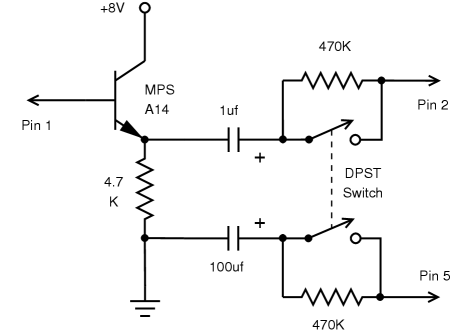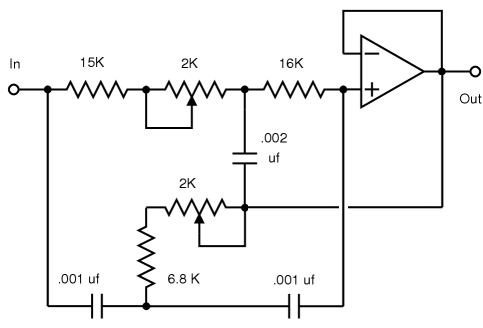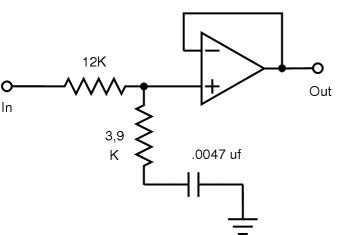


|
P × P = P N × P = N P × N = N N × N = P |
Where: N = Negative P = Positive |
| System | None | Elliptic | Butterworth | *Synchronous |
|---|---|---|---|---|
| Belar | 0% | 16.8% | 9.8% | 4.0% |
| Magnavox | 0% | 19.9% | 11.7% | 4.4% |
| Motorola | 0% | 18.1% | 11.7% | 3.4% |
| Kahn | 0% | 15.2% | 9.4% | 3.2% |
| Harris | 0% | 3.3% | 2.2% | 0.9% |
| 0-1kHz | 5kHz | 7½kHz | 9kHz | 10kHz | 12.5kHz |
| 0db | +.38db | -.25db | 3db | -8.5db | -23.6db |
|
fc=1/(2πR√C1×C2) Q=√C1/2√C2 fc=9.035kHz Q=2.51 A=1 Gain@fc=+8db |

|

|
12K+3.9K=15.9K 15.9K×.0047µƒ=74.7µs 1/(2π×74.7µs)=2.13kHz 1/(2π×3.9K×.0047µƒ)=8.683Hz Close enough. |
